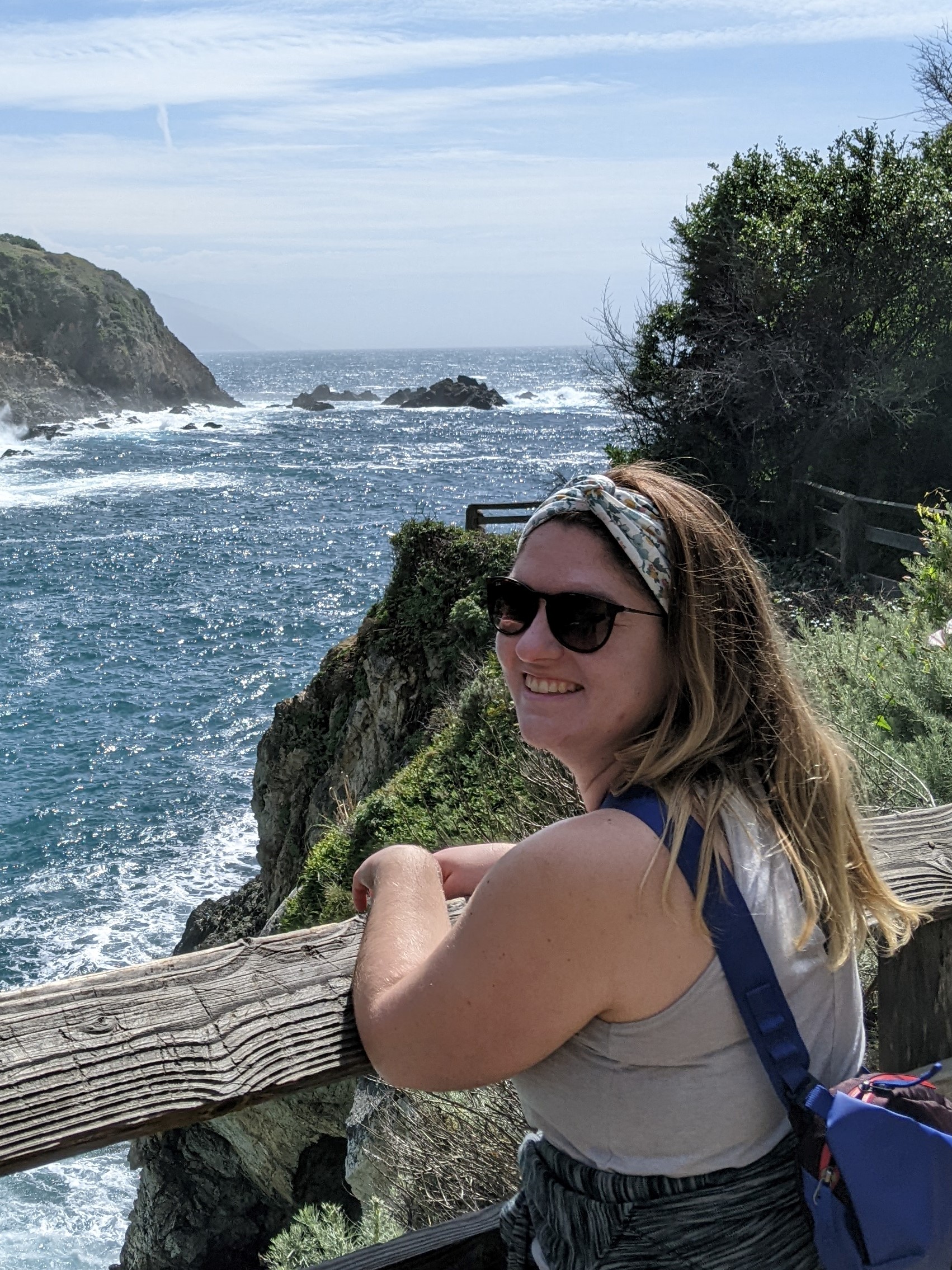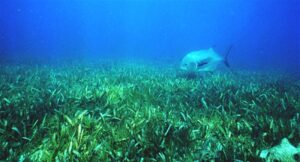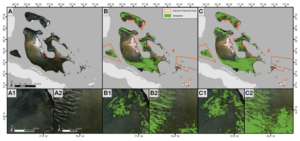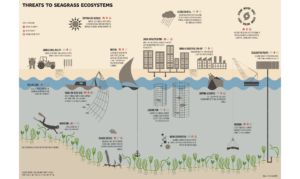Blume A, Pertiwi AP, Lee CB and Traganos D (2023) Bahamian seagrass extent and blue carbon accounting using Earth observation. Front. Mar. Sci. 10:1058460. doi: 10.3389/fmars.2023.1058460
Secret Seagrass Superheroes
When you imagine life underwater, is the first picture to come to mind a beautiful, flowering meadow? Probably not. However, lurking just below the surface in shallow coastal waters, are seagrass beds, the only marine flowering plant! Seagrasses are akin to plant superheroes, as they filter out pollutants in the water, create homes for fish and other small marine animals, and protect our coastlines from the threats of floods. They also take carbon dioxide out of the atmosphere and store it in sediment, where it can get locked up for millennia. Seagrass beds are 35 times faster than tropical rainforests at removing carbon dioxide, making them one of the most important ecosystems in our fight against climate change. Though seagrass beds haven’t gotten the same attention as say, coral reefs, they deserve their day in the sun!
Figure 1. Seagrass beds provide habitat for a variety of marine species, photo from NOAA Photo Library
Seeing Seagrass from Space
Recently, researchers wanted to understand the spatial extent of seagrass beds in the Bahamas. They wanted to know how much of the shallow coastal waters of the Bahamas were home to seagrass beds, how much carbon they took up, and what monetary value could be given to this ecosystem.
First, researchers used satellite data, or images from space, to estimate the area of the seagrass beds. Because different types of habitats reflect light at different wavelengths, called their spectral signature, the researchers were able to distinguish between seafloors with seagrass, sand, rock, and coral reefs in the satellite images. They did this using machine learning- this is a way to process large amounts of data by “training” a computer to distinguish objects in an image. Using this method, they were able to estimate the overall area of seagrass beds in the Bahamas. They used seagrass carbon sequestration estimates from other research to evaluate the amount of carbon dioxide that all seagrass beds in the Bahamas were taking up on a yearly basis.
Figure 2. Satellite image of the study region (A), with the minimum (B) and maximum (C) estimated area of seagrass beds, shown in green. Al-C2 provide close-up imaging. The areas bordered in red are Marine Protected Areas. Figure from Blume, et al., 2023.
Seagrass Accounting
Researchers found that seagrass beds cover between ~39,000 and ~47,000 square kilometers of the coastal waters of the Bahamas; this is about 40% of the shallow water area surrounding the country! They also estimate that all the seagrass beds in the Bahamas remove between 103 and 123 megatons of carbon dioxide out of the atmosphere every year; this is about 60 times the annual carbon dioxide emissions of the country, making the Bahamas essentially carbon neutral. Though, researchers emphasized the importance of future study and continued monitoring, as these estimates have uncertainties and bias that comes with use of satellite data and machine learning. Using the EU carbon market pricing, the carbon dioxide sequestration of all seagrasses in the Bahamas is valued at 2.78-3.32 billion euro per year. However, only about 10% of the seagrass beds of the Bahamas reside in a Marine Protected Area. To continue to enjoy all the benefits that seagrasses give, policymakers, governments, and individuals must act to protect these species from future human degradation.
Figure 3. Human threats to seagrass ecosystems. Image from Grida.No
Cover photo: NOAA Photo Library

I am an MS student in Chemical Oceanography at the University of Rhode Island Graduate School of Oceanography. My research focuses on biogeochemical fluxes of nutrients both in the water column and in sediment. I am interested in how nutrient fluxes change in response to low oxygen conditions. Prior to graduate school, I received a BS in Environmental Science and a BA in Biology from the University of Vermont. In my free time, I like to ride my bike and drink good coffee.




